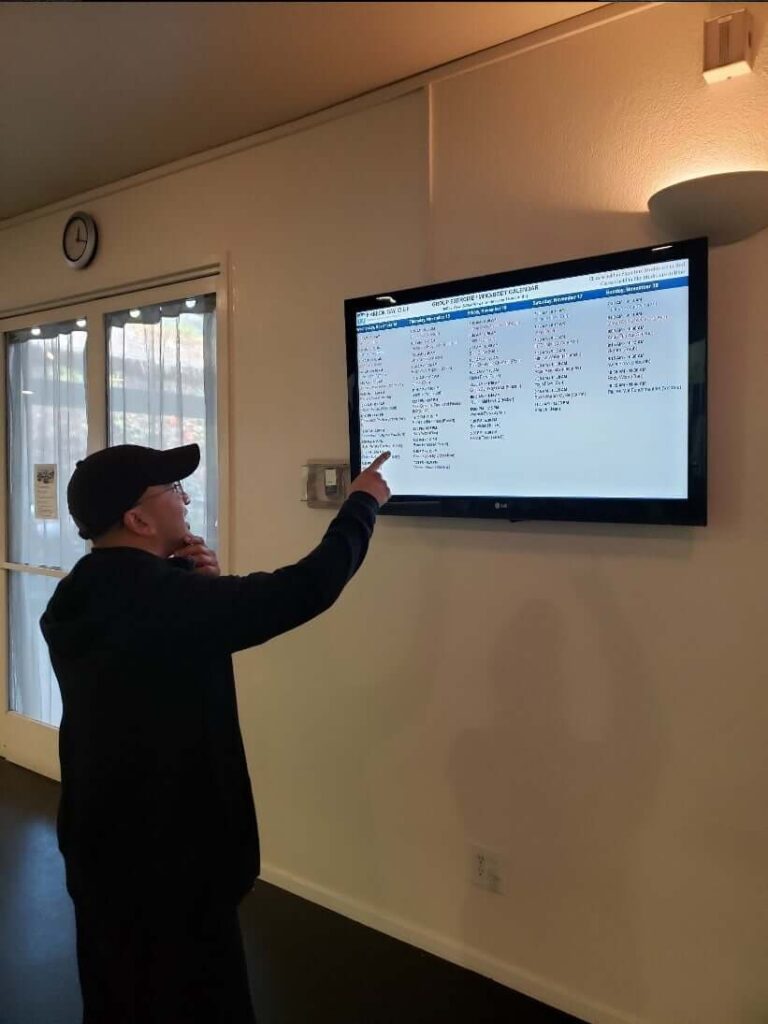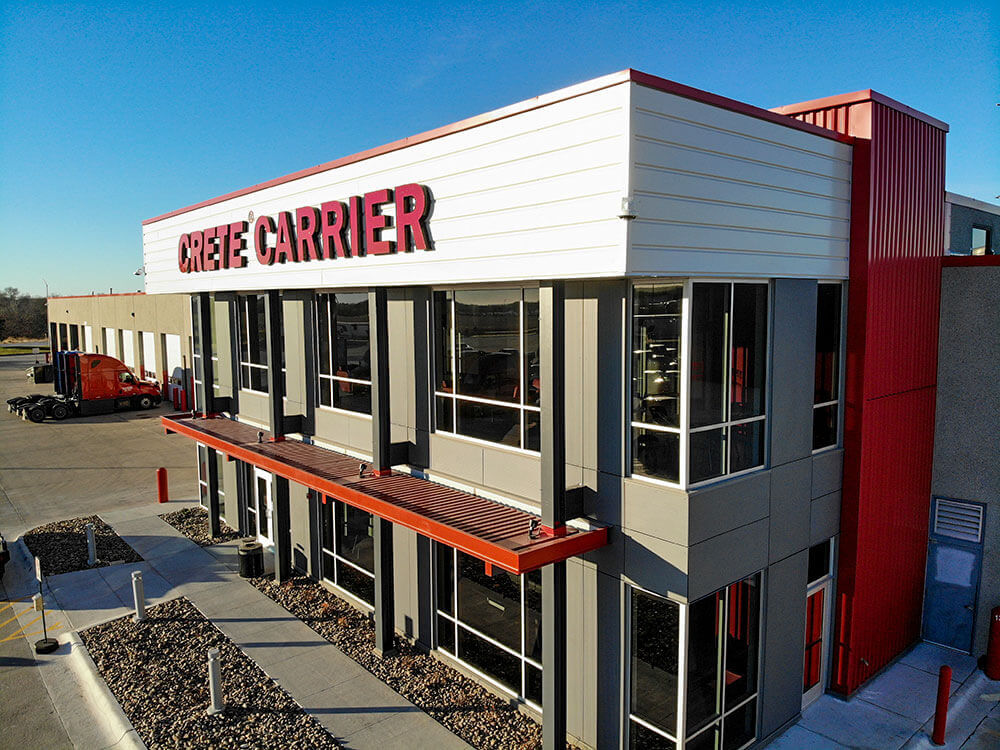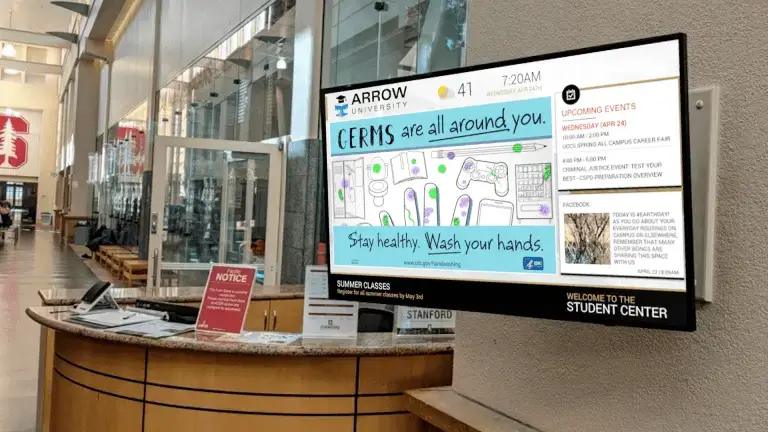AN INTRODUCTORY OVERVIEW TO THE WORLD OF DIGITAL SIGNAGE
The digital signage industry is one of the most consistently evolving industries within the SaaS market. Leveraging modern technology and integrating powerful apps and third-party software, each year, digital signage platforms undergo many changes and updates to enhance the service they provide. As a result, it can be overwhelming to stay up to date with everything going on within the industry, or even your own signage platform if you have already signed on to one. Before diving into all the ways digital signage for business is transforming this year, let’s go over the main things you need to understand about digital signage software so you have a comprehensive understanding of how these tools will evolve over the rest of the year.
To begin, we must understand the core tenets of digital signage. Digital signage encompasses the software, hardware, and content that create your displays. Let’s break each one down.
Software is the content-management system that your digital signage provider allows you to create and publish content on. These CMS platforms are often powered through cloud technology, allowing users to publish and save content remotely. This is where all your content, apps, and media player management will take place. These platforms also often come with proprietary apps that allow you to perform certain functions in addition to allowing third-party integrations. In order to get the most out of your digital signage network, be sure to test its flexibility before signing on long-term.
Hardware encompasses two different things: screens and media players. Screens are the actual TVs or other displays that will showcase your digital signage content. We recommend having a minimum HD display (1920p x 1080p resolution) of about 42 inches or higher placed 6-7m away at about 60 degrees maximum above eye level. This ensures a comfortable viewing distance that allows your screen to make an impact even if they are simply walking by. In high foot traffic areas, you only have a few seconds to make an impression. Dim screens, blurry resolutions, or inaccessible viewing angles will ruin any chance for viewers to remain interested in your displays.
Media players, on the other hand, are mini PCs powered by PoE connections and stream the content to your screens. Some players are more powerful than others, and some will not be able to perform the same functions as others. Doing the research before making a purchase is crucial to getting the most out of your signage.
Finally, content is the most widely encompassing aspect of these 3 main tenets. This is where a lot of the flexibility comes into play. That is because, unlike traditional displays or communication methods, digital signage allows you to leverage apps and third-party integrations to get more content or functionality out of your platform. These apps and integrations let you pull content from outside news sources, social media feeds, external calendars, or even webpages through iframes. This not only expands your content options but also can automate certain processes that will streamline your overall workflow. If you have a certain app or service you would like to implement into your digital signage system, contact your account manager or install coordinator to begin scoping out the project.
Now that we have a baseline understanding of what encompasses digital signage platforms, we can begin analyzing the transformative nature of the software providers. However, perhaps you want to get a head start on your digital signage journey. At REACH Media Network, we act as both a hardware and software provider. Our user-friendly, enterprise-grade software is compatible with hundreds of apps and integrations, allowing you to tailor content exactly to your business needs. Additionally, if you need a media player, our partnership with BrightSign will guarantee you are getting some of the most reliable players on the market. Or, you can purchase REACH Media Network’s own DS3 media player that comes preinstalled with REACH’s software. If you’re interested in talking to an expert, click the button below to get started!
SEE DIGITAL SIGNAGE IN ACTION
Want to experience the power of digital signage firsthand? Request a free demo today and explore how REACH Media Network can enhance communication and engagement within your religious venue.
Digital Signage Case Studies
Before breaking down ways that digital signage will be transformative this year, let’s take a look at 2 clients that have already transformed as a result of their signage integration.
The first is Westborough Public Schools. They have integrated digital signage into nearly every aspect of their digital communication effort in a way that benefits both students and staff. For example, the school district can draw more attention to clubs and external programs by tailoring content per the display’s location. For example, athletic content can be hosted in the athletic wing, drawing in potential athletes, while the library can advertise guest speakers to draw in a bigger crowd than they would otherwise. From an internal education standpoint, the district leverages REACH Media Network’s weather and radar tools to host “Weather Mondays” to teach elementary students about weather trends and why certain phenomena occur.
From an enterprise retail perspective, there is no better example than Stewarts’ Shops. As a regional convenience store, the retail chain originally used magnetic strips and physical displays to advertise its audience on ice-cream flavors and seasonal changes. Using digital signage, headquarters can cut down on cost and time by sending flavor changes and prices from a central location. Additionally, individual shops can update their flavors while HQ manages the prices, resulting in a more streamlined workflow. Across 400 stores and 350 licenses, Stewarts’ Shops has completely evolved its communication network.
Lastly, we must also highlight one of REACH Media Network’s biggest partners: Snap Install. Snap Install aids us in offering full turnkey digital signage solutions and ensures a smooth installation process. Initially, Snap Install will evaluate on-site qualifications and possibilities to determine the best strategic locations for a business’s displays and ensure everything matches local codes and regulations. If an issue cannot be solved remotely by a REACH Media Network representative, they can contact Snap Install to do an on-site evaluation.
10 WAYS DIGITAL SIGNAGE WILL TRANSFORM BUSINESS IN 2025
Now that we’ve analyzed some real-life examples of digital signage’s transformative nature, let’s break down all the ways digital signage will change over the next year. Some of these trends follow similar ones from 2024 and will last well beyond this year as technology continues to improve and evolve. However, remaining aware of these changes over time will help you gradually adapt new technology and strategies into your display. This will prevent technological stagnation for your business and make it easier to implement new communication methods.
AI WILL EXPAND
Artificial intelligence is here to stay. Already being adapted in many different ways across various industries, AI has been shown to streamline certain workflows and assist with analyzing trends that allow people to adapt their strategy. In digital signage systems, AI is being used to adapt playlist announcements in real-time. For example, dips in weather can trigger the AI to switch to a playlist that promotes relevant items. Restaurants can use AI to automate menu item changes based on the time of day or availability of certain items. Connecting an AI with a calendar API can help it schedule content relevant to upcoming events and drive engagement or registration submissions. In advanced systems that utilize cameras and microphones, AI can recognize voices and audience demographics/behaviors to recommend relevant promotions. A recent report by Accenture found that 91% of consumers are more likely to shop with brands that recognize, remember, and provide relevant offers and recommendations. Through AI, content can be more personalized to fit these consumer attitudes. By using AI to tailor the content being displayed, you reduce content fatigue and enjoy the benefits of automation.
INTERACTIVITY WILL CONTINUE TO RISE
Once a foreign or expensive venture for signage enthusiasts, interactive digital signage displays are becoming increasingly popular in many signage networks. Most notably, digital wayfinding has seen the biggest growth for interactive displays. When you think about it, it just makes sense. Giving users control of their experience and finding their way around complex facilities is likely more effective than static maps or simple directories. Interactive wayfinding maps can guide users through a facility from their current starting point or showcase routes to take that users can easily follow along.
From an engagement perspective, digital signage can drive certain desirable behaviors that can result in a greater conversion rate. For example, fast-food restaurants can use interactive kiosks to take and process customer orders. However, while they are ordering, they can also still promote limited-time items, promotional deals, or new menu items that can result in viewer curiosity or desire. Rewards programs can be linked to interactive sign-ons to recommend new items they might enjoy or make ordering their favorites quick and efficient. Retail clothing displays can use interactivity by producing models for people to see how certain clothing items look before buying them. By utilizing interactive software in digital signage, you’ll introduce an exciting, new form of communication that audiences would be excited to engage with.

5G PROCESSING WILL INCREASE SPEEDS
5G is the latest in wireless networking that offers the fastest transmission speeds we’ve seen so far. For digital signage, this means substantially faster transmission speeds. Content updates pushed to displays can be updated in real-time, with just seconds between the submission and the display. High-definition videos or livestreams can be displayed more reliably without lag or buffering. As we talked about in the previous section, interactive digital signage displays can also benefit from 5G integration. With the high-speed delivery of 5G, interactive formats can help users quickly find information or navigate menus without needing their own devices or waiting in lines. These immersive experiences are similar to using a tablet or smartphone, making them intuitive experiences for the majority of audiences.
SUSTAINABILITY GROWS IN IMPORTANCE
With more environmentally conscious audiences, the pressure to find eco-friendly, sustainable digital signage solutions is being felt across many industries. LED technology is known to be the most energy-efficient lighting option around at the moment. Without any toxic materials and a long shelf life, LED digital signage displays are proven to be a very sustainable display option compared to other signage hardware. Additionally, some companies are beginning to power their digital signage through solar-powered solutions. These are two of the most prominent ways companies are reducing energy consumption to be more eco-minded. However, digital signage has some inherent, eco-friendly benefits as well. Producing traditional forms of advertising, like posters, brochures, and other physical items, often uses multiple forms of production to finalize, resulting in greater overall pollution. These items often have small shelf lives, thus producing more waste in the long run. Digital signage is able to circumvent these downfalls while disseminating more information.
SEE DIGITAL SIGNAGE IN ACTION
Want to experience the power of digital signage firsthand? Request a free demo today and explore how REACH Media Network can enhance communication and engagement within your religious venue.
PROGRAMMATIC ADVERTISING PROVIDES REVENUE STREAMS
Programmatic advertising is the automation of purchasing and placing advertising space in digital signage. These are typically out-of-home (OOH) digital displays. Through digital signage, companies can analyze certain metrics to adjust these ads based on performance. Programmatic ad digital signage allows brands to reach audiences more effectively. By removing the manual process of buying and selling ad space, interested advertising buyers can automatically bid and purchase ad space. These spaces are then displayed automatically through digital signage, where both the signage provider and client can monitor performance and adjust accordingly. By implementing programmatic ads into your signage strategy, you can open up an additional stream of revenue while still serving fresh content to your audience.
OUT-OF-HOME DISPLAYS
As we just mentioned during the programmatic ads section, out-of-home displays are a prime avenue for buying and selling ad space. However, other outdoor display options can be beneficial as well. Implementing outdoor signage can expand your digital footprint beyond where you may normally place a screen. This opens the door to larger audiences that may not have seen your displays.
VOICE INTEGRATION & SMART DISPLAYS
We mentioned above how voice recognition and smart display technology can integrate with AI to drive content. While this is one method of incorporating this technology, more will eventually become more widespread. For example, some interactive displays use voice recognition to answer questions asked by viewers. People can ask questions to the display, and then an AI will answer or pull up the answer for them. This conversational approach to interactive signage provides a unique engagement opportunity for users and encourages desired behaviors.
ORIGINAL CONTENT CREATION
While many digital signage systems integrate with third-party content creation software, such as Canva, many are starting to implement their own software that you can utilize right within the CMS. For example, REACH Media Network’s upcoming CMS 2.0 has been revamped to provide more customization, template creation, and faster, easier use. If you’re interested in opting in, reach out to your account manager today!
LOWER ENTRY COSTS
The entry costs for digital signage have proven to be a big barrier for many businesses to adopt signage into their communication strategy. However, prices are dropping overall. HD television screens are dropping in price as the technology improves and 4k becomes the new standard. Even smaller 4k displays are dropping in price. From there, affordable digital signage software is available for those looking for a new platform (such as REACH Media Network).
ANALYTICS WILL DRIVE ROI
A common theme throughout each of these trends is how analytics will drive strategy. With a proper strategy, you can implement content or utilize your signage in ways that will increase your return-on-investment (ROI). Incorporating corporate metrics or taking advantage of integrations such as PowerBI can display important metrics or key performance indicators (KPIs) that can track performance in real-time. You can analyze this information to determine how to get even greater ROI through your digital signage screens.
CONCLUSION
Now that we’ve looked at 10 ways digital signage will transform businesses this year, it is up to you to see which ones will prove most effective for your own company. If you’re curious about how digital signage can fit into your organization, you can click the button below to set up a free demo. Our team will help you scope out the project and showcase effective signage layouts tailored to your brand. If you’re interested in starting your digital signage journey, fill out the form below or contact us today!
READY TO START YOUR DIGITAL JOURNEY?
Discover how digital signage can transform your religious community. Reach out to REACH Media Network today to learn more about our solutions, explore custom integrations, and see how we can help you connect with your congregation in meaningful ways.


